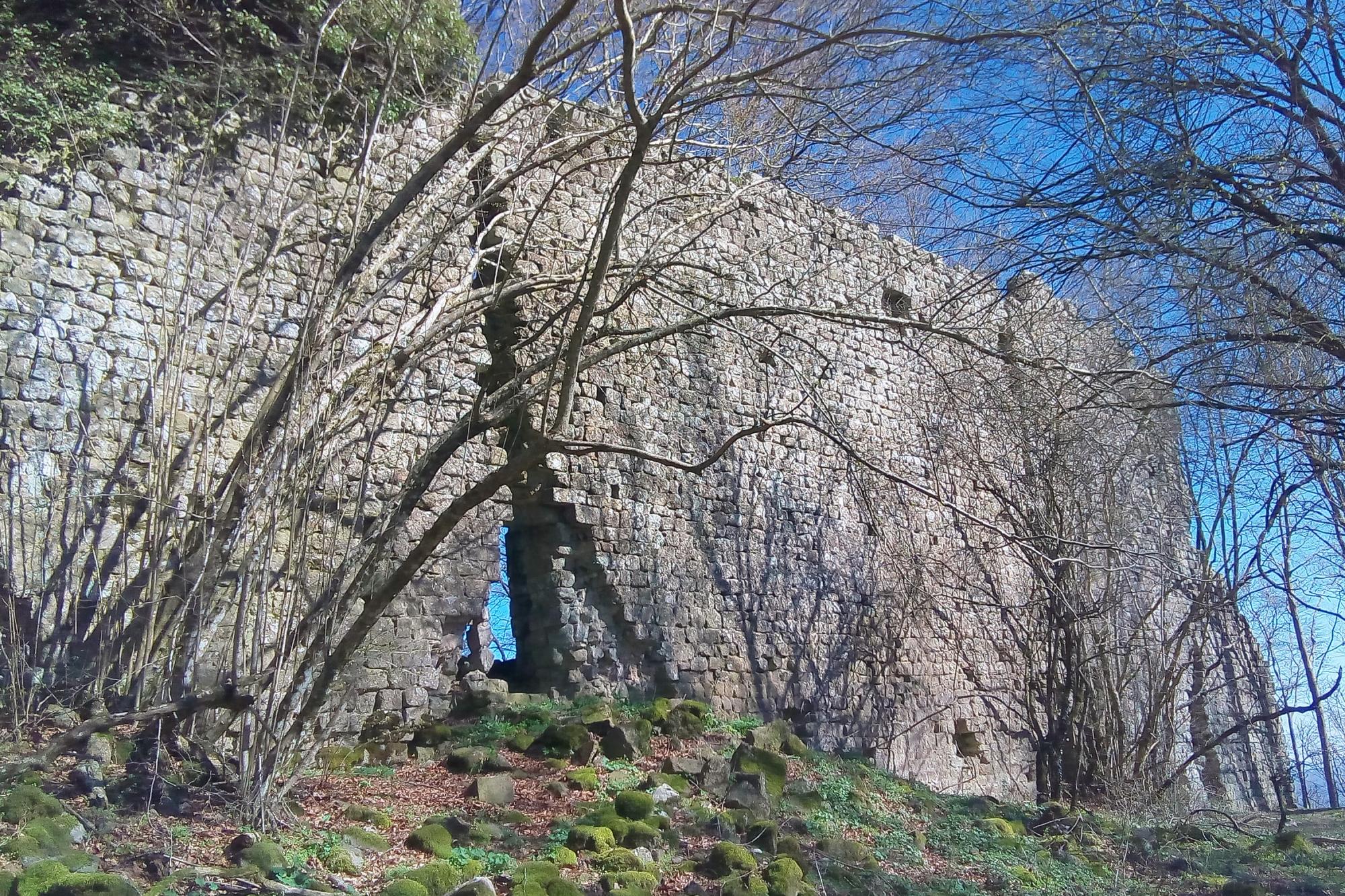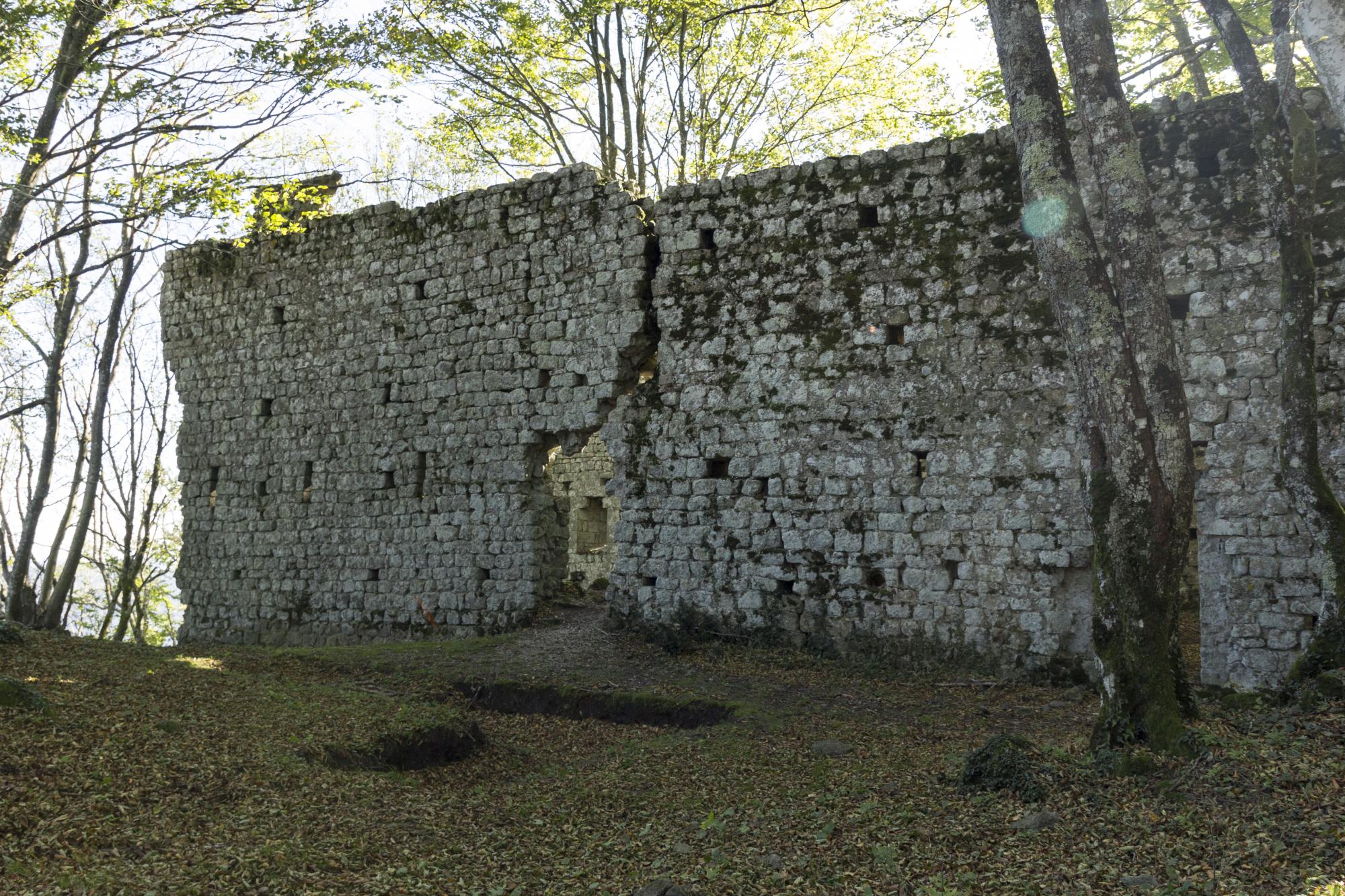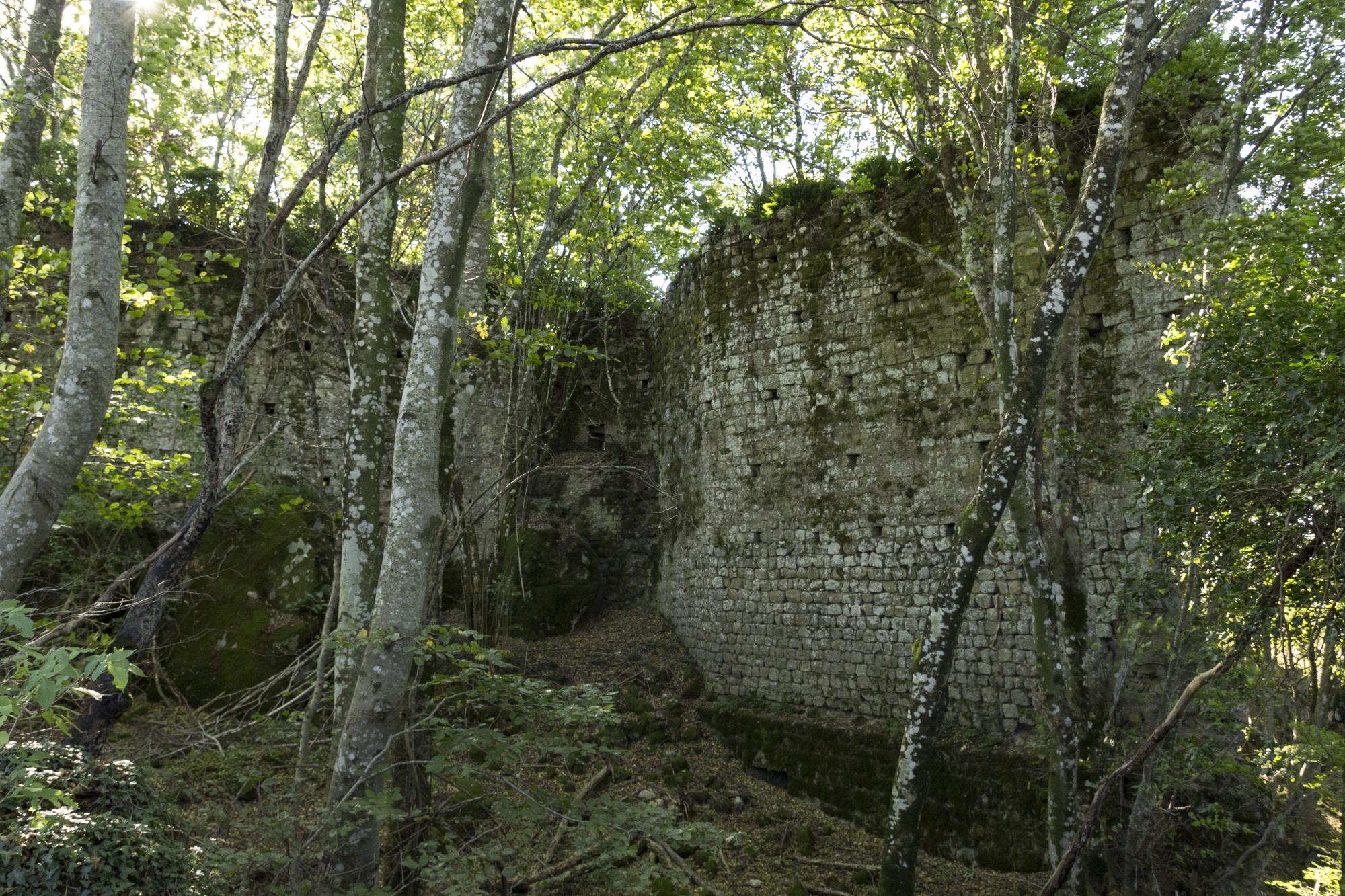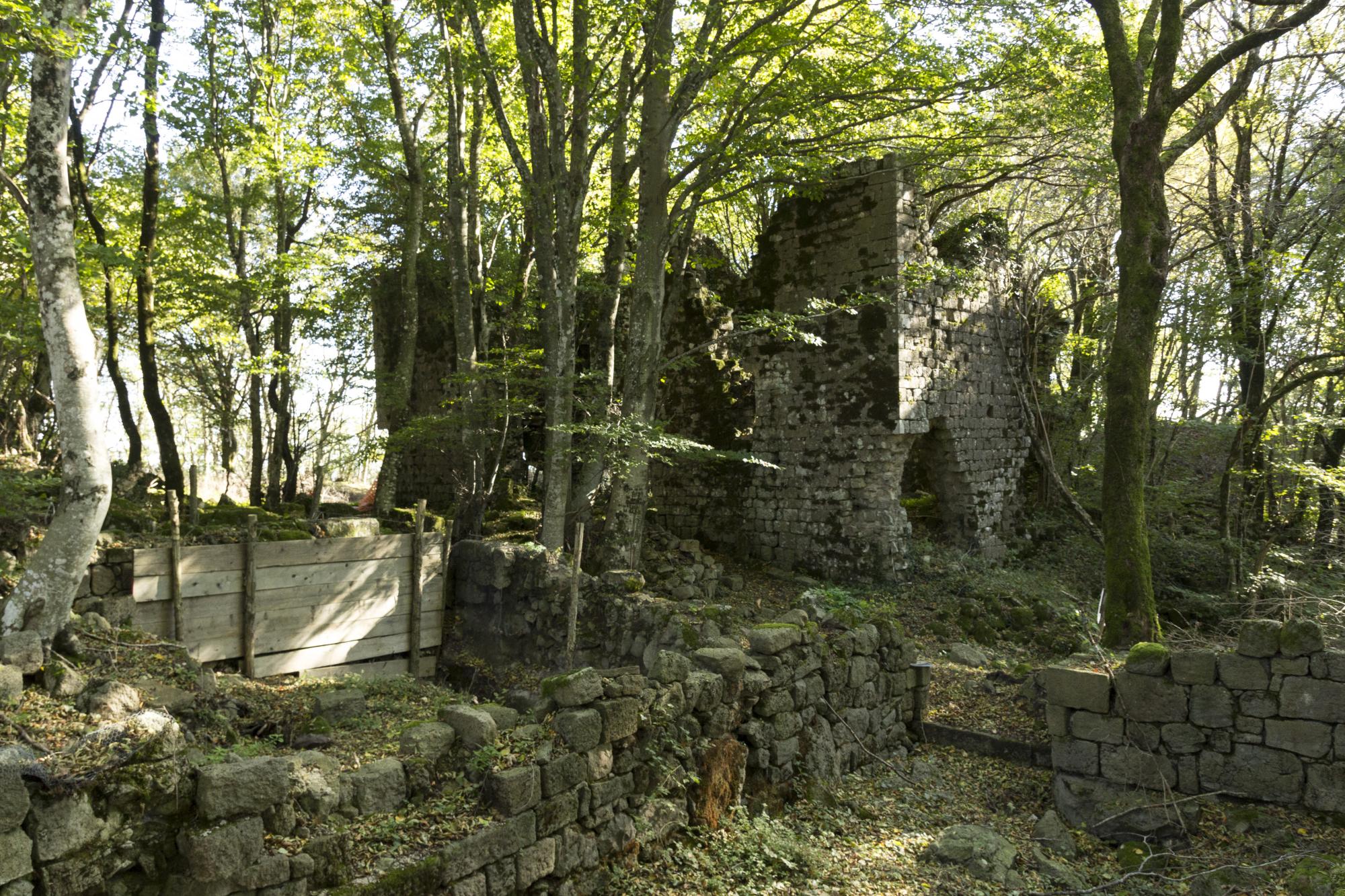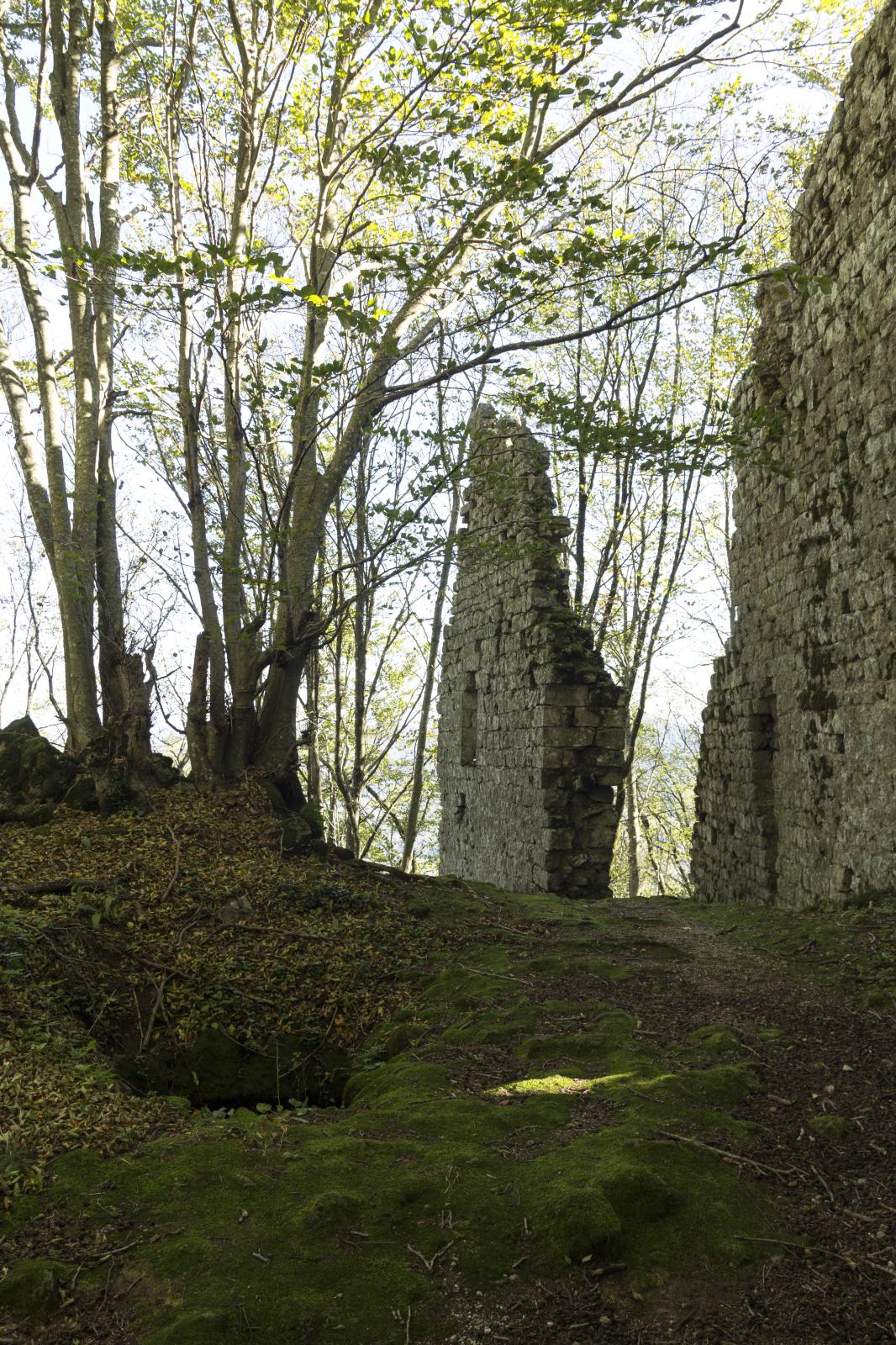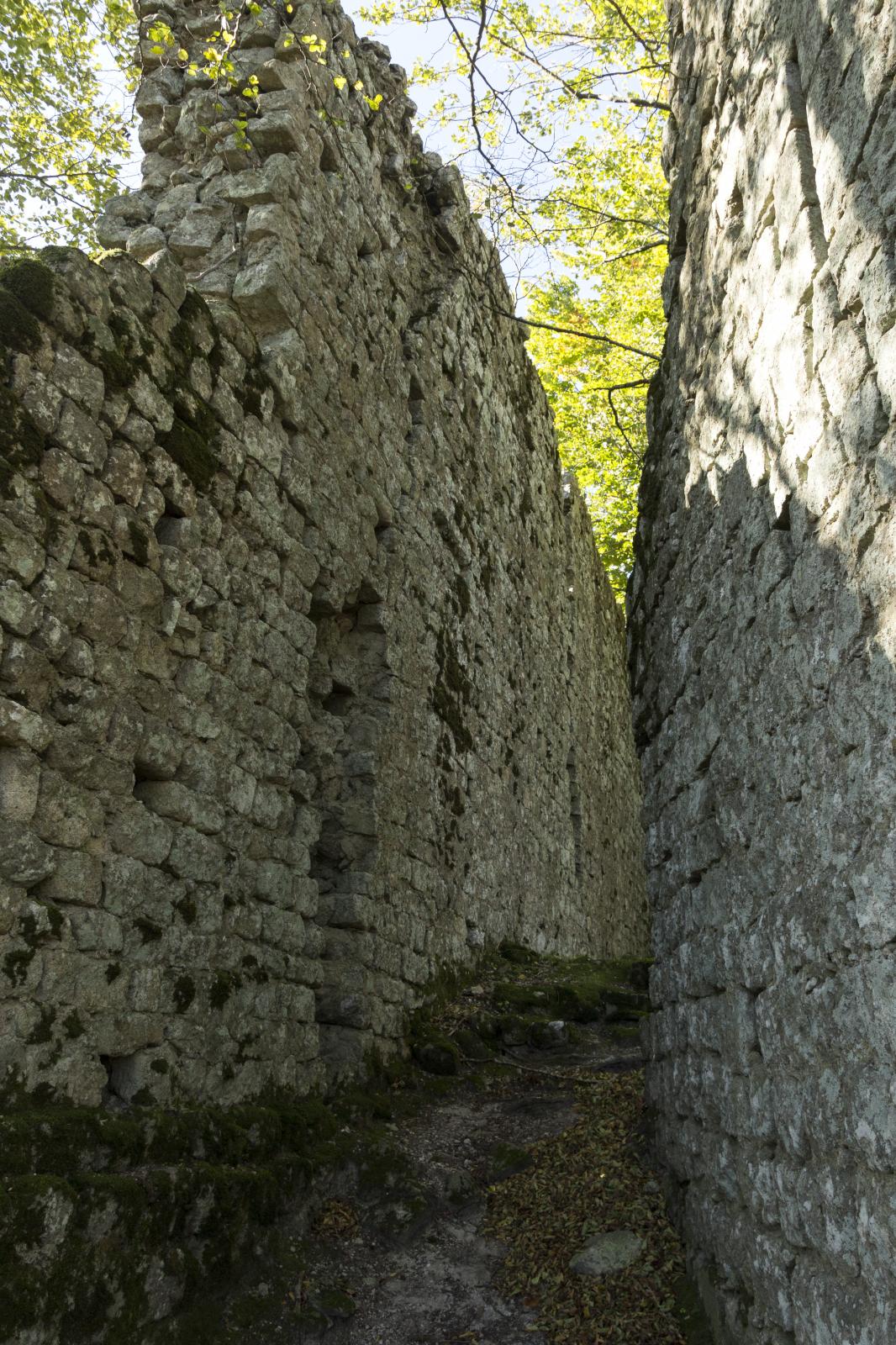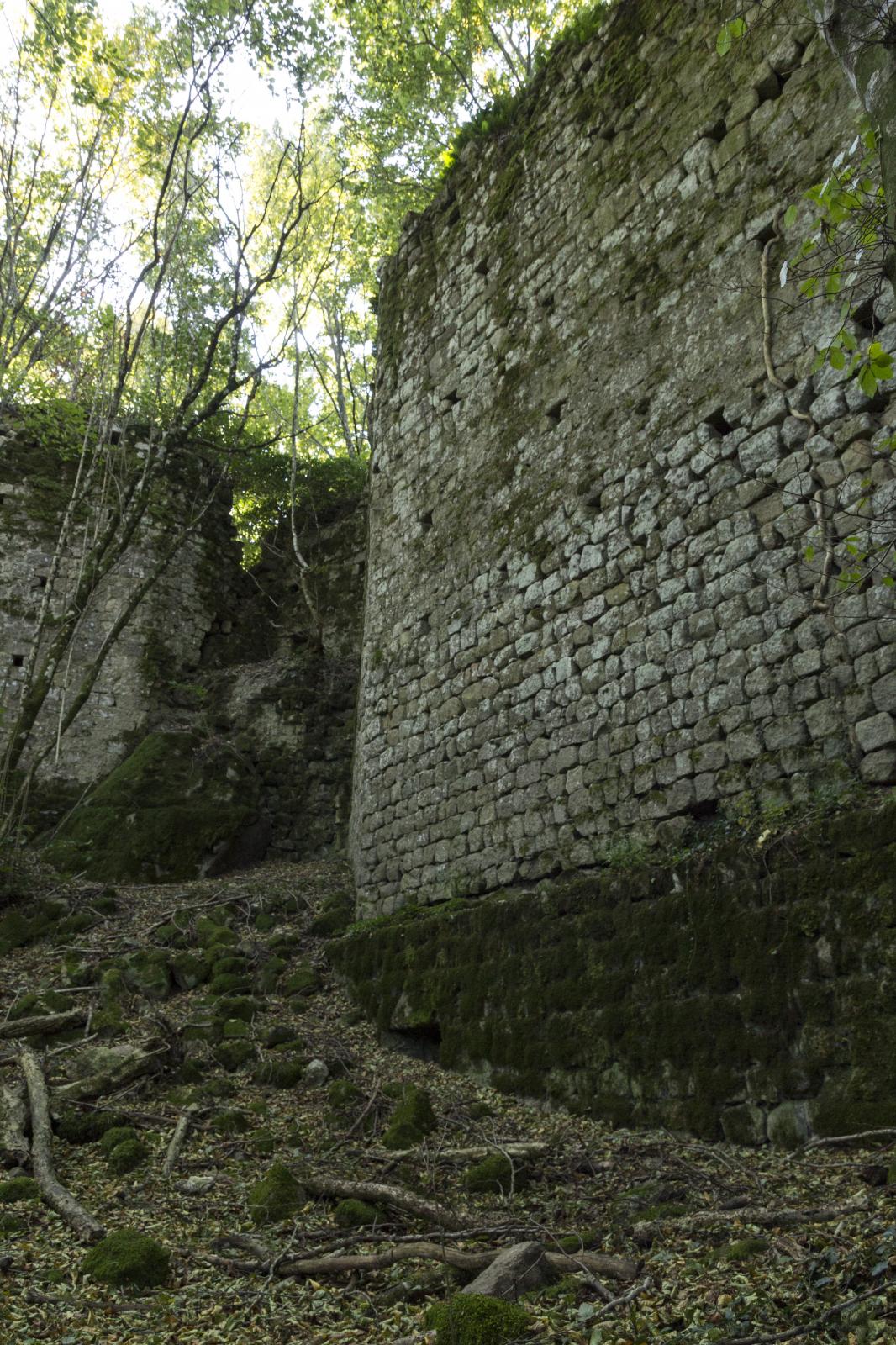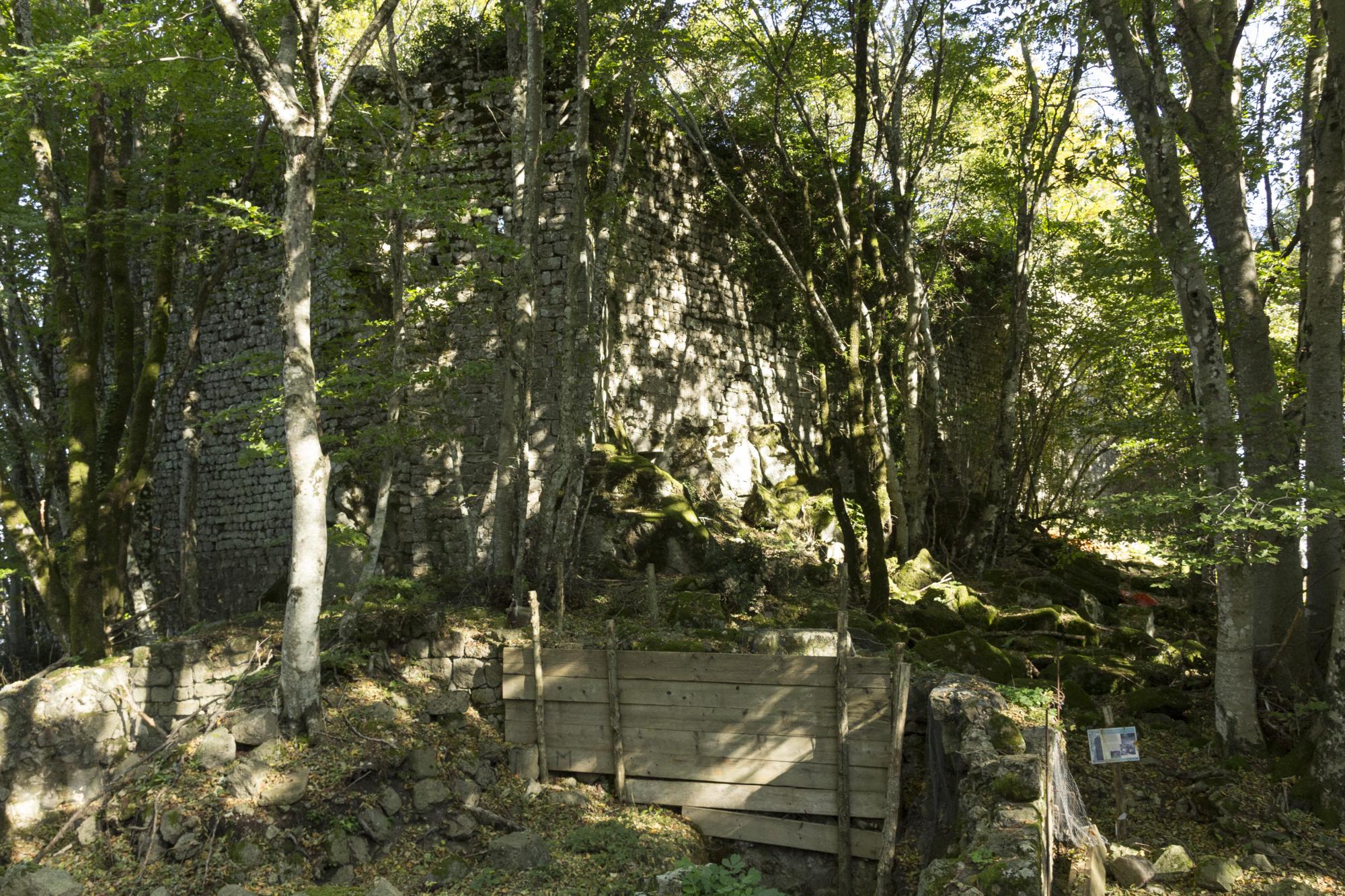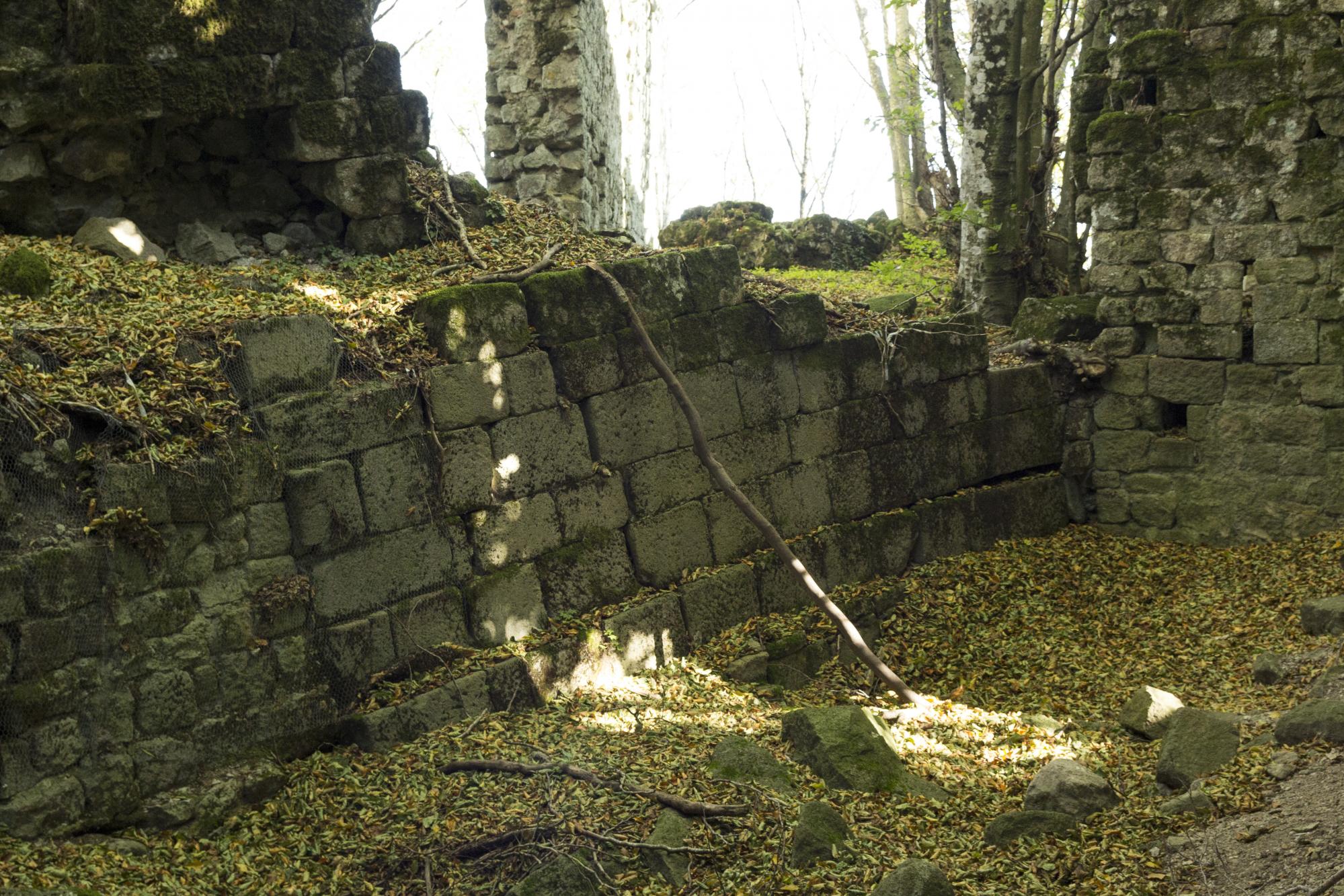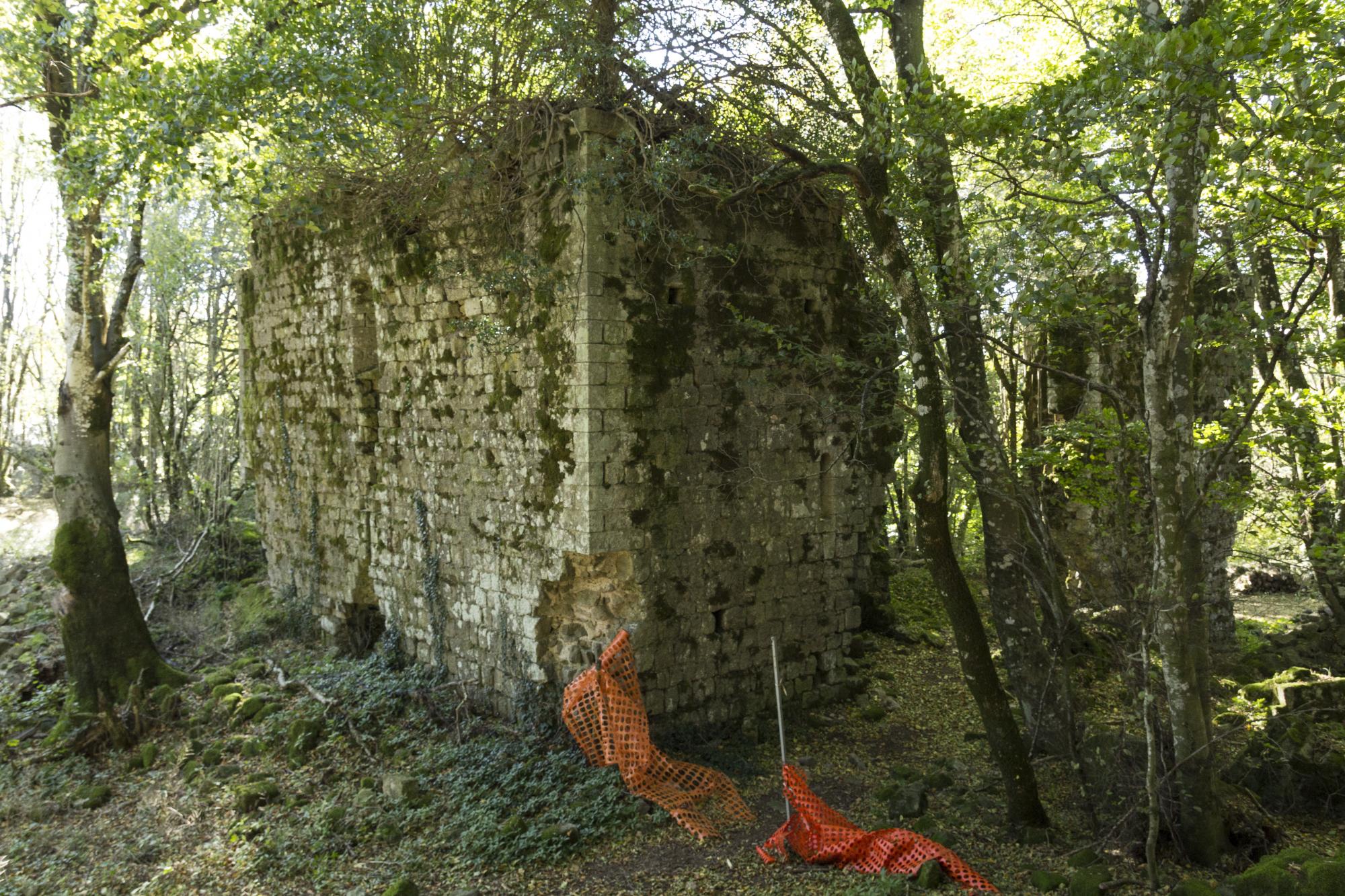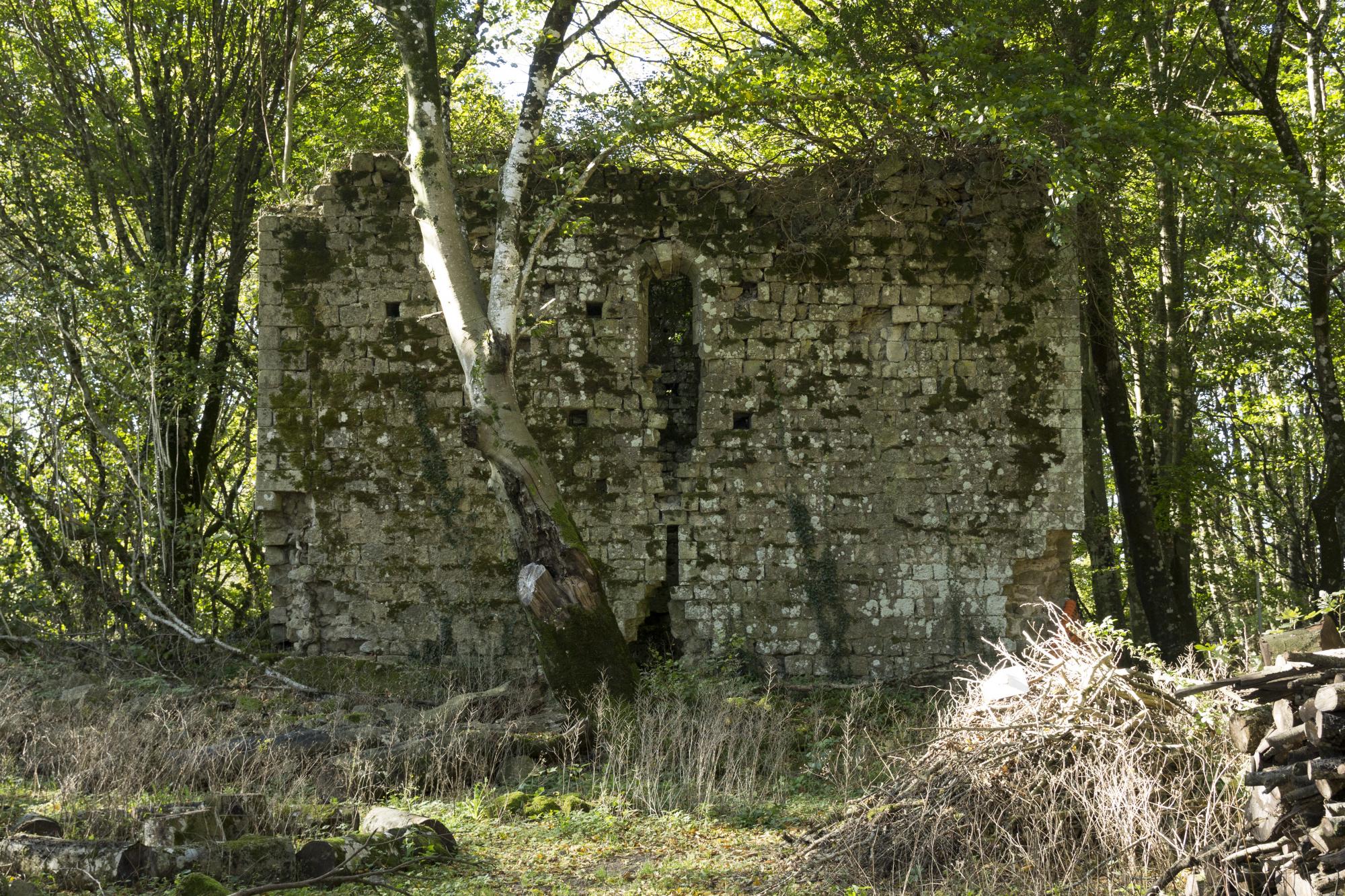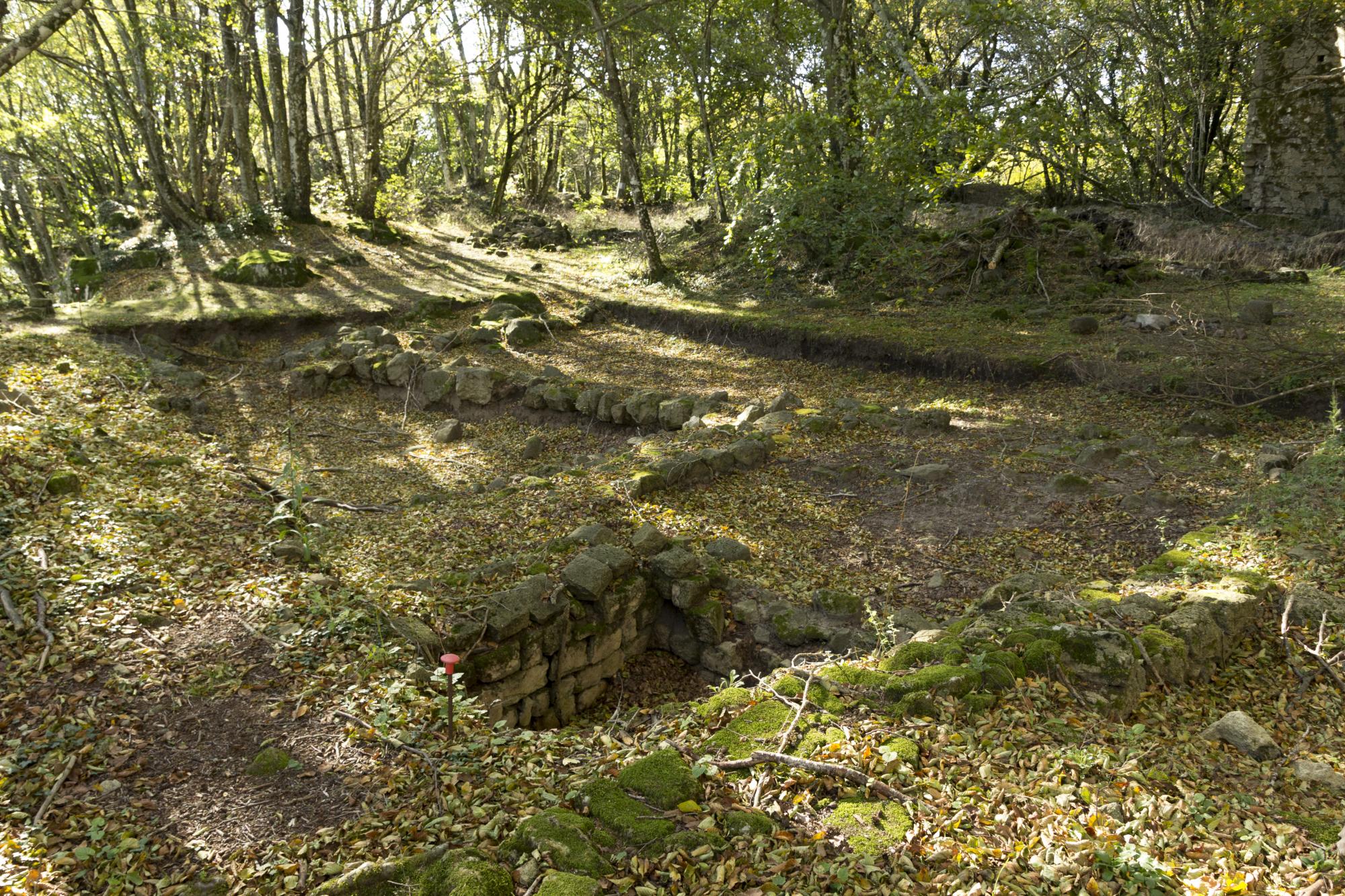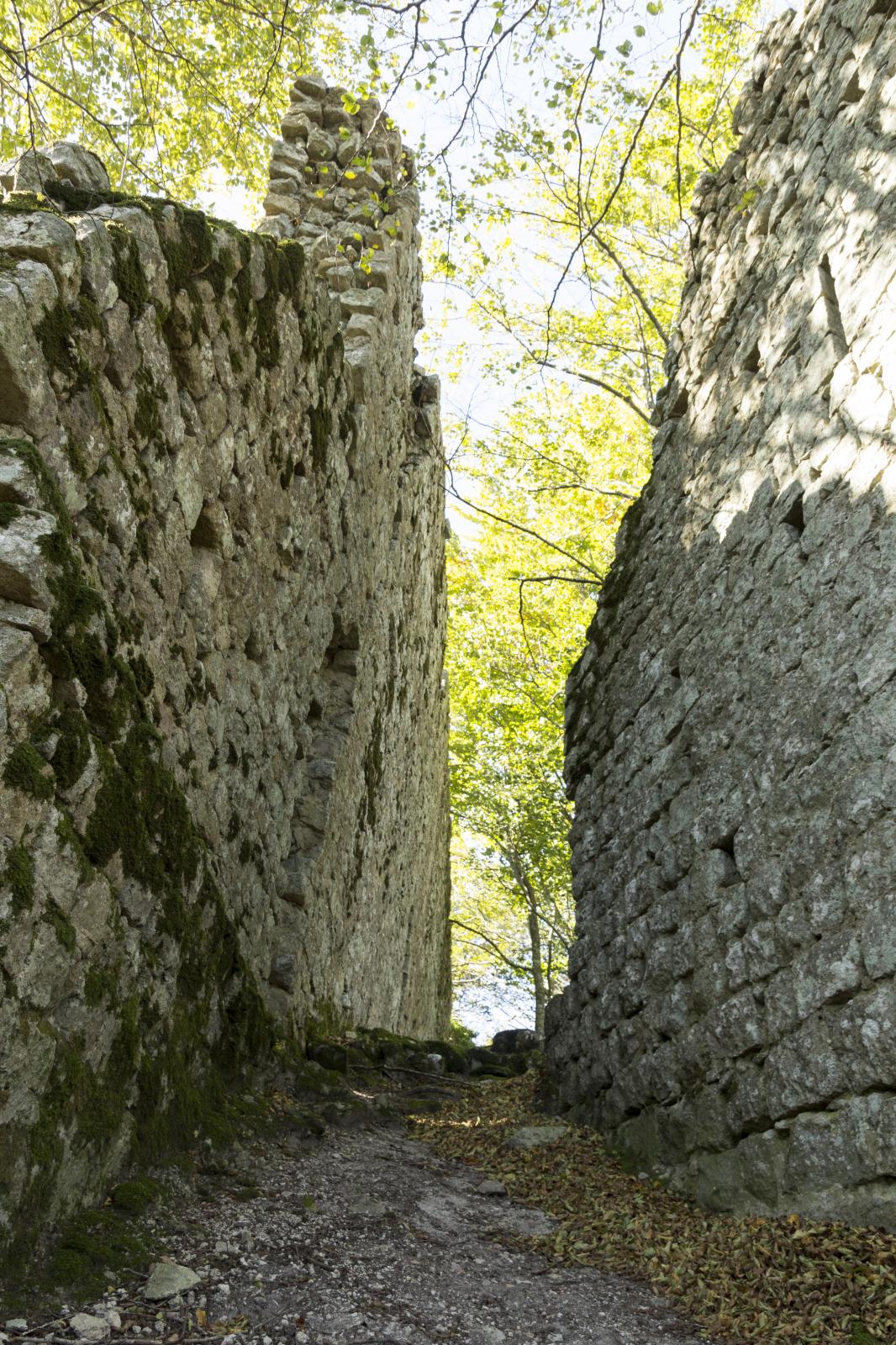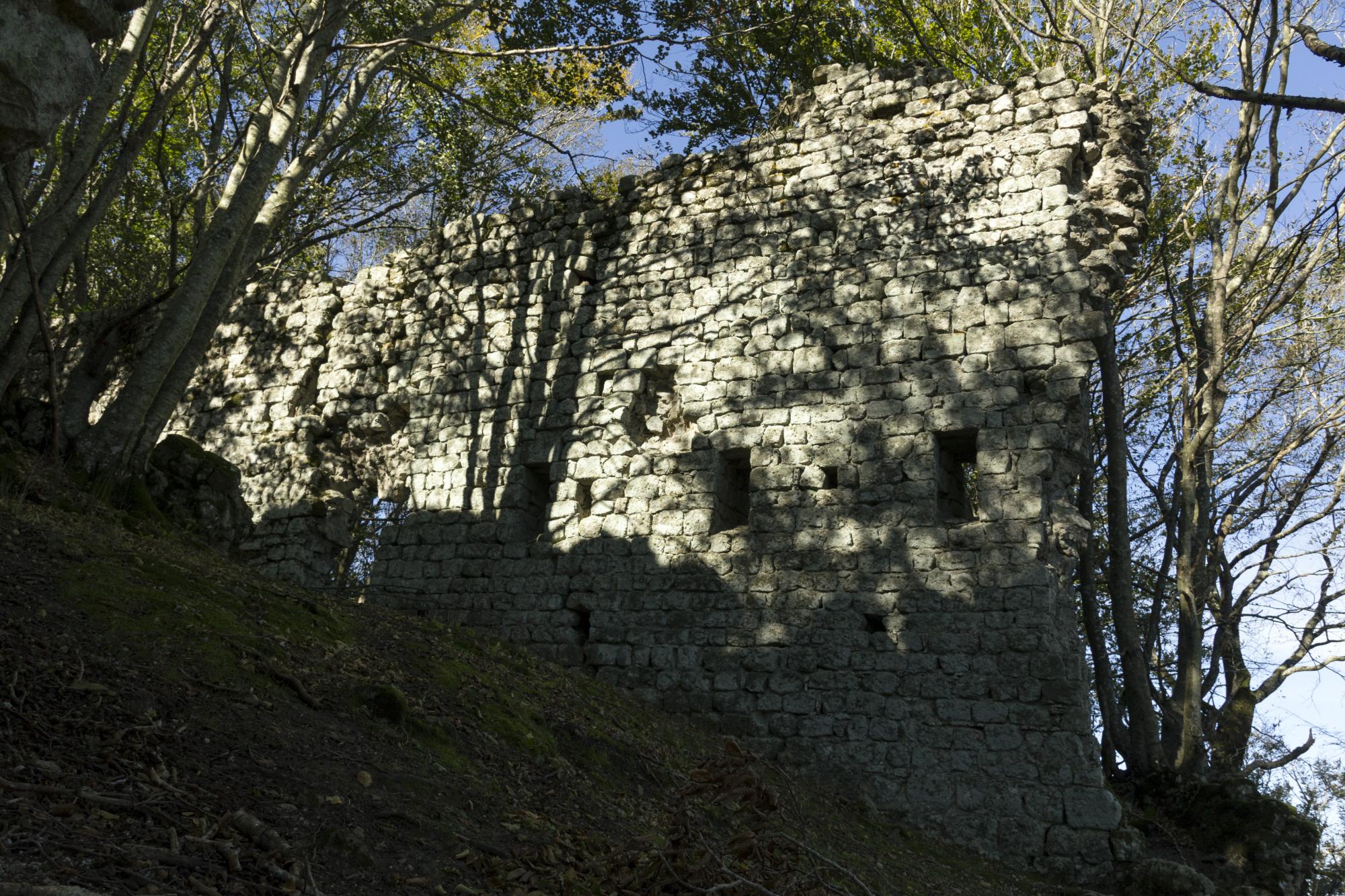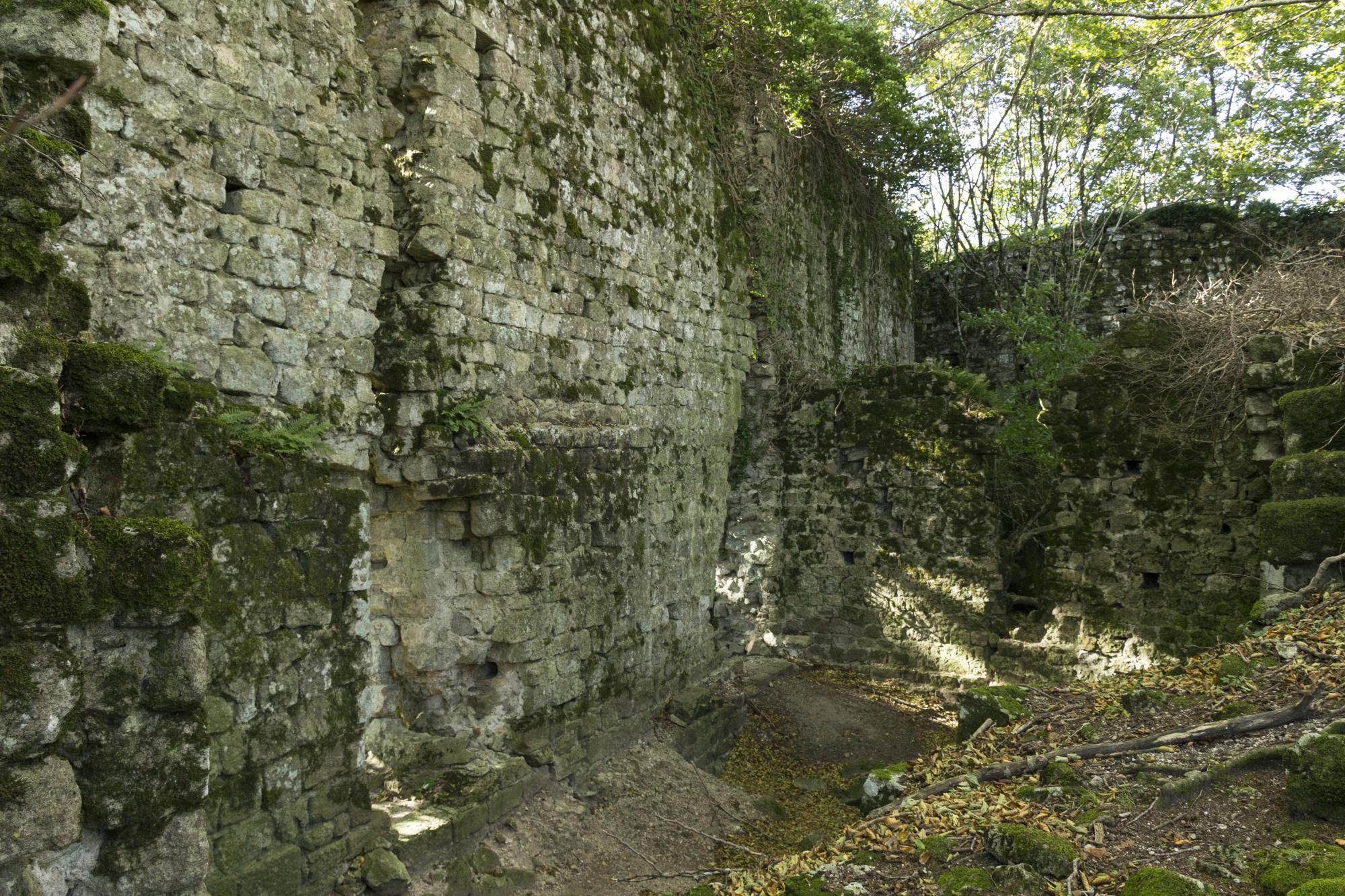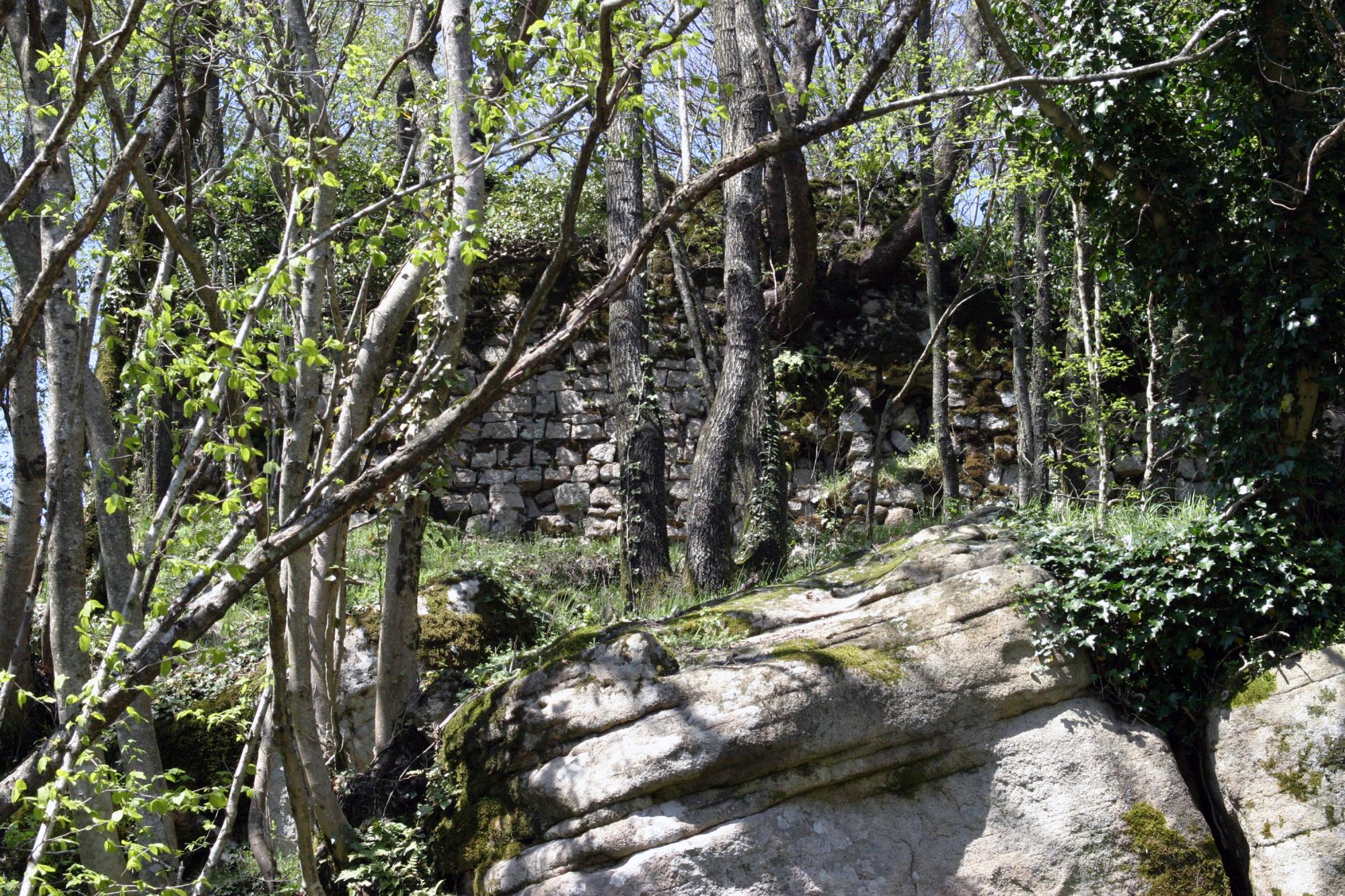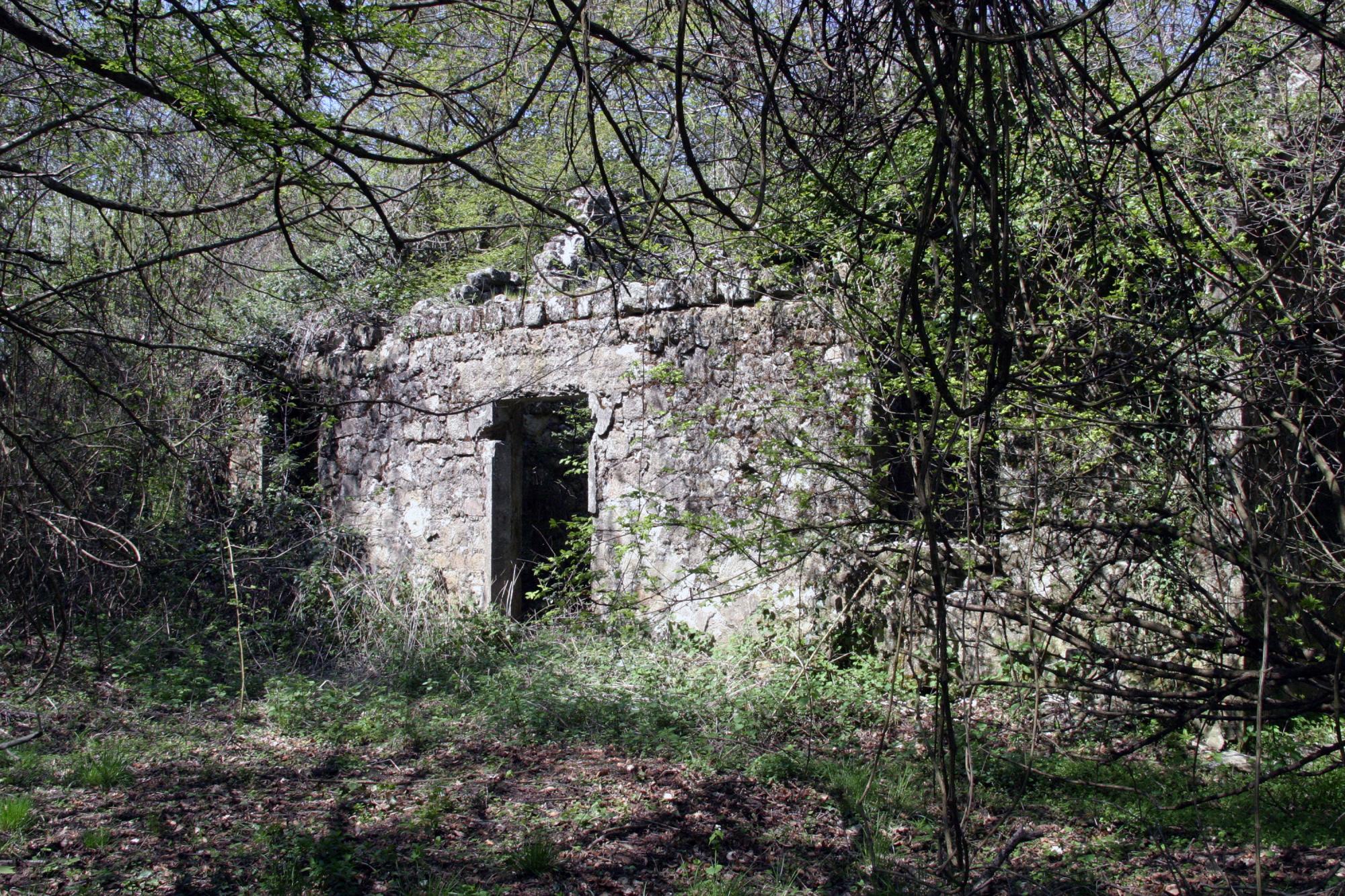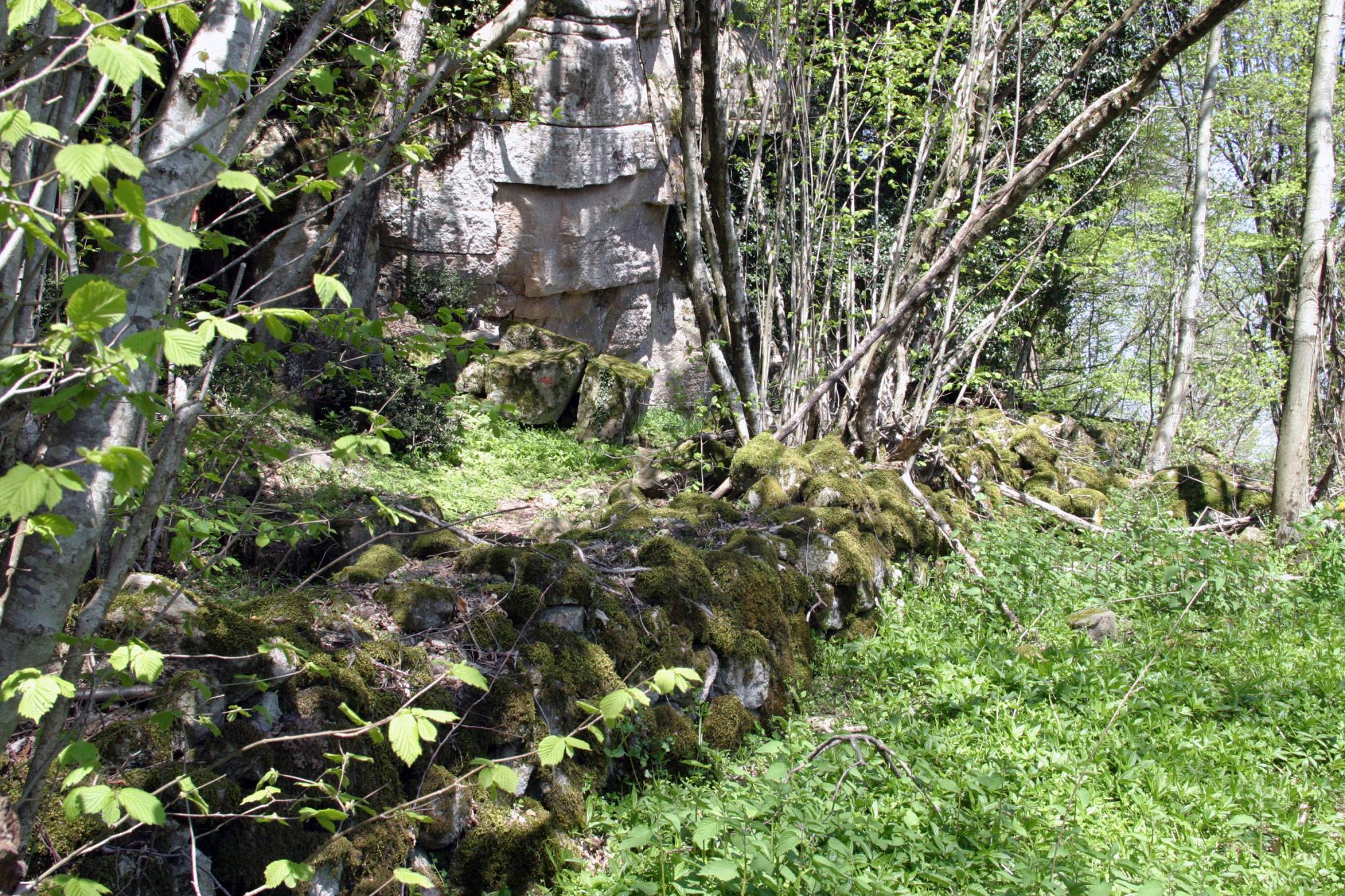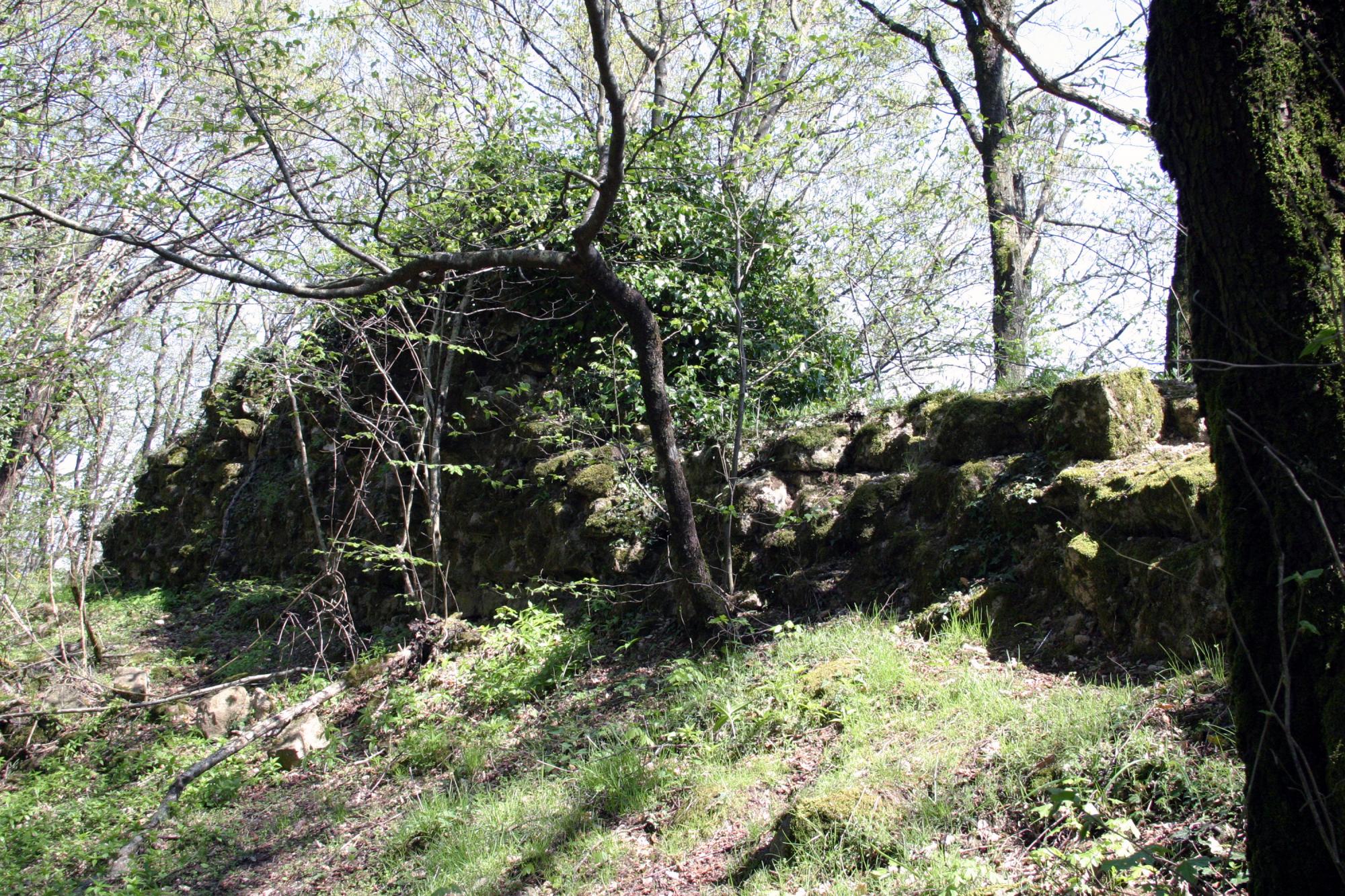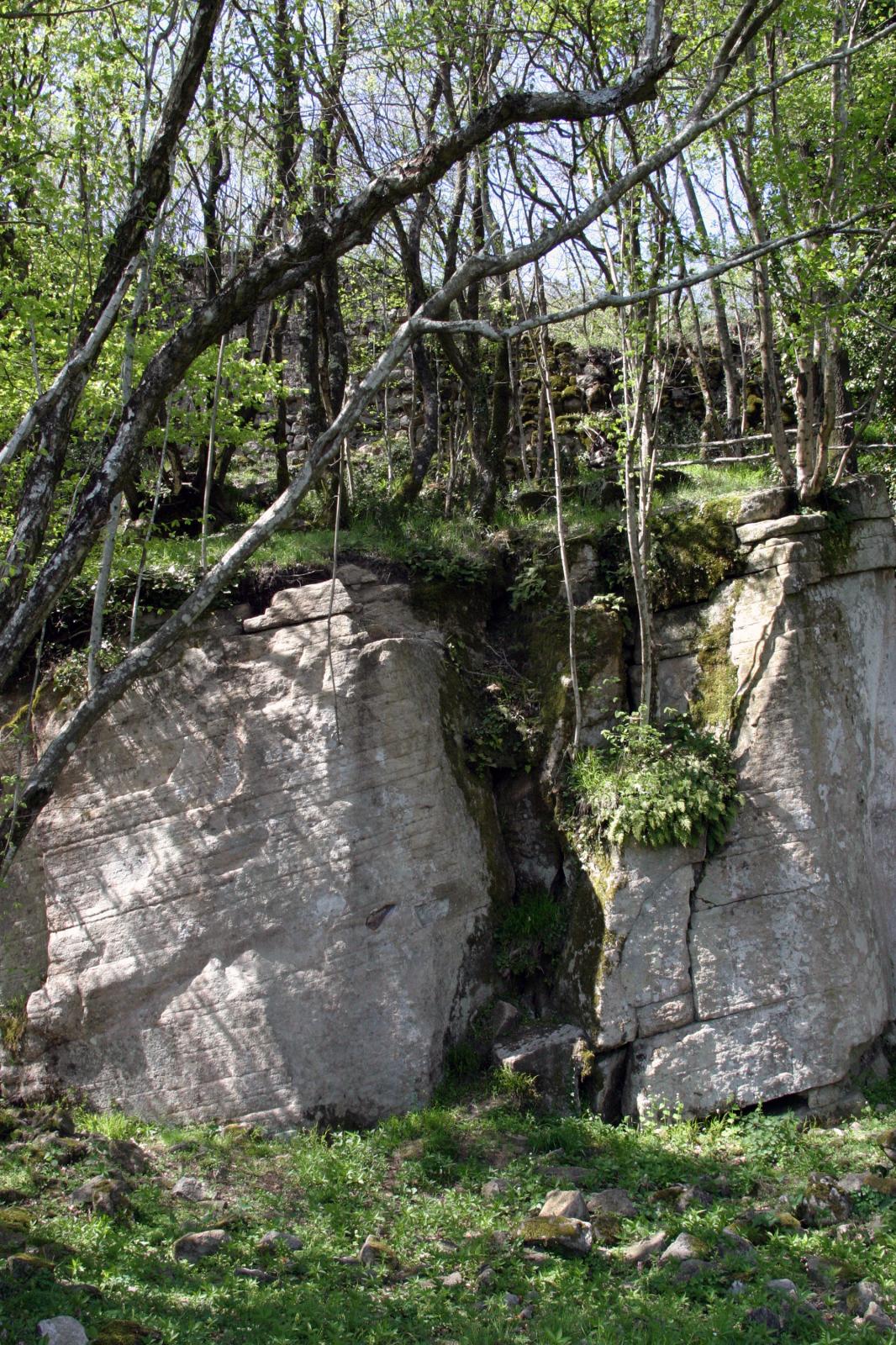How to reach
The ruins of Sassoforte can be reached from the town of Sassofortino. Follow the motorway Firenze-Siena until you reach Siena, where you will continue on the Siena-Grosseto motorway. Exit at Civitella Marittima and continue towards Roccastrada. Pass the town and continue to Sassofortino/Roccatederighi. When you reach the town, follow the signs for the castello/campo sportivo (castle/soccer field), and at the first crossroad, continue on the right. The road becomes unpaved and very steep. After a few hundred meters, the road levels, and almost in front of the first house that you come to on your right, a small, unpaved trail begins that crosses through the chestnut woods until you reach Sassoforte. You can also reach the castle by a trail from the Municipal Park.
History
The Castle of Sassoforte belonged, as most of the Maremma castles, to the counts of the Aldobrandeschi family. The most ancient citation is from 1076 and concerns the donation of an oratory (SS. Margherita and Lucia in Sassoforte) and other goods by the Count Ildebrando Aldobrandeschi to the Church of Montemassi. The Aldobrandeschi are also mentioned in 1221, when Emperor Federico II confirmed “ruling and rights” for their vassals, among which Uguccione of Sassoforte degli Ardengheschi is mentioned.
Later, the Ardengheschi, Lords of Sassoforte, tried to liberate themselves from the rule of the Aldobrandeschi, pursuing self-interest by surrendering to Siena in order to receive help in overturning the rule of Umberto Aldobrandeschi. From this moment on, a period of relative autonomy begins for Sassoforte, and it tries to extend its influence on the other castles of the Upper Maremma with continuous skirmishes against the Aldobrandeschi and other nobles of the zone.
These aggressions worried Siena, who finally accepted the request of the inhabitants of the nearby town of Roccatederighi for a military intervention to bring the owners of Sassoforte back to order. In 1328, the famous captain Guidoriccio da Fogliano besieged the castle of Sassoforte, which surrendered almost immediately. The Aldobrandeschi took advantage of this defeat and, in vengeance, conducted in chains to Santa Fiora, Ghinozzo, the last Count of Sassoforte. In 1330, they sold the castle to Siena for 5,500 florins. Siena, fearing the strong position of this fortress, ordered that the walls and the keep be destroyed while the territories were granted to the inhabitants at an annual fee of 600 lire.
Although the fortifications were destroyed, a substantial number of people continued to live in uncomfortable conditions in the castle. The inhabitants, decimated from poverty and from the Black Plague, were reduced from 1353 to only 50 people; the castle, or what remained of it, passed in 1368 to the Salimbeni but continued its unstoppable degrade until, in March 1438, Sassoforte was declassified and the inhabitants moved to the new village of Sassofortino. During the following centuries, vegetation took possession of Sassoforte.
The ruins of the castle are extended on the whole circumference of a crag, at the summit of the Sassoforte hill. The walls, the towers, and the keep were built with excellent craftsmanship, and much of the architectural techniques used can still be admired. The double-walled enclosure had to be, without a doubt, imposing, even though the entire perimeter didn’t have the same characteristics due to the position of the land on which the castle rose, which was surrounded by precipices and therefore not easily accessible.
The keep is located towards the north-west. This high construction still has the access gate decorated with a vegetable motif. Above this is the breteche for the defence of the entrance. In front of the walls is a rectangular construction equipped with beautiful windows. Everything in this structure of this castle denotes so much care, mastery, and refinement in details not typical of a common building.
Its great dimensions and architectural endowments are not frequently found in buildings in this area. The castle of Sassoforte is one of the finest in the zone and a testimony to the power possessed by the Lord of Sassoforte. It was probably used as a public Palace of Justice. A visit to the Sassoforte Castle is particularly evocative because of the secular chestnut woods that are crossed by foot on the way up the mountain in order to reach the ruins. The sensation of discovery and the beautiful panorama of the sea and the woods is memorable.
More info & notes
Lot of photos by Francesco Viti
